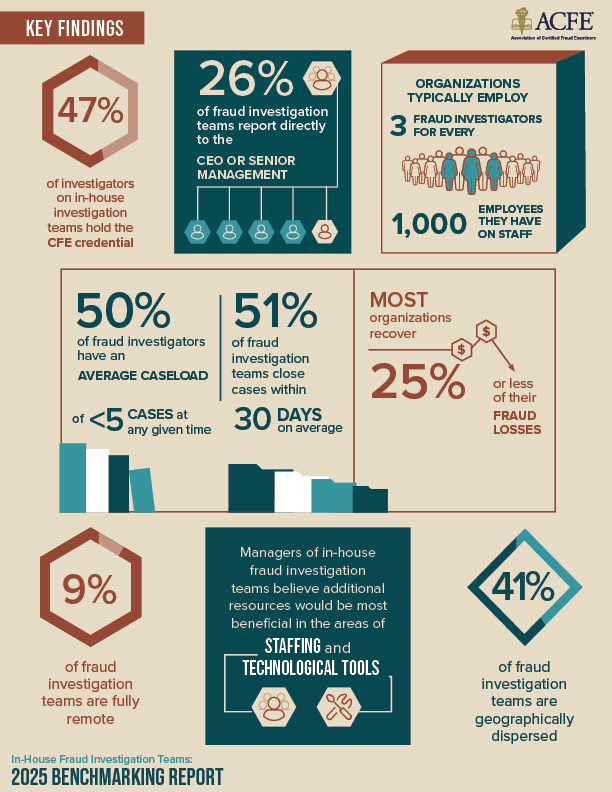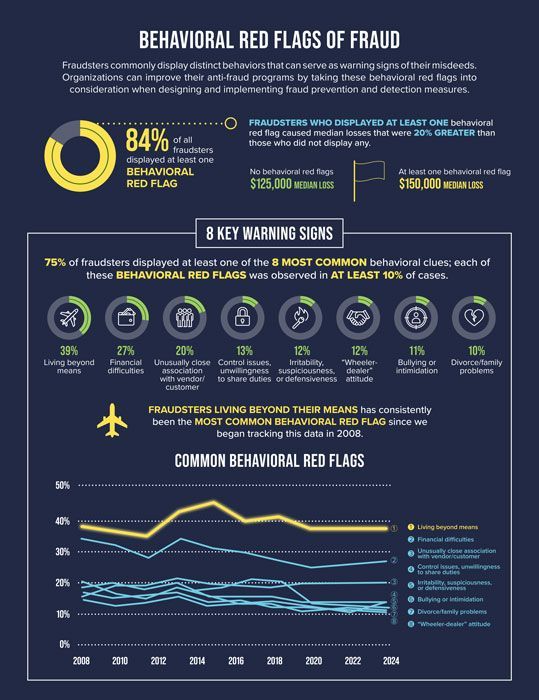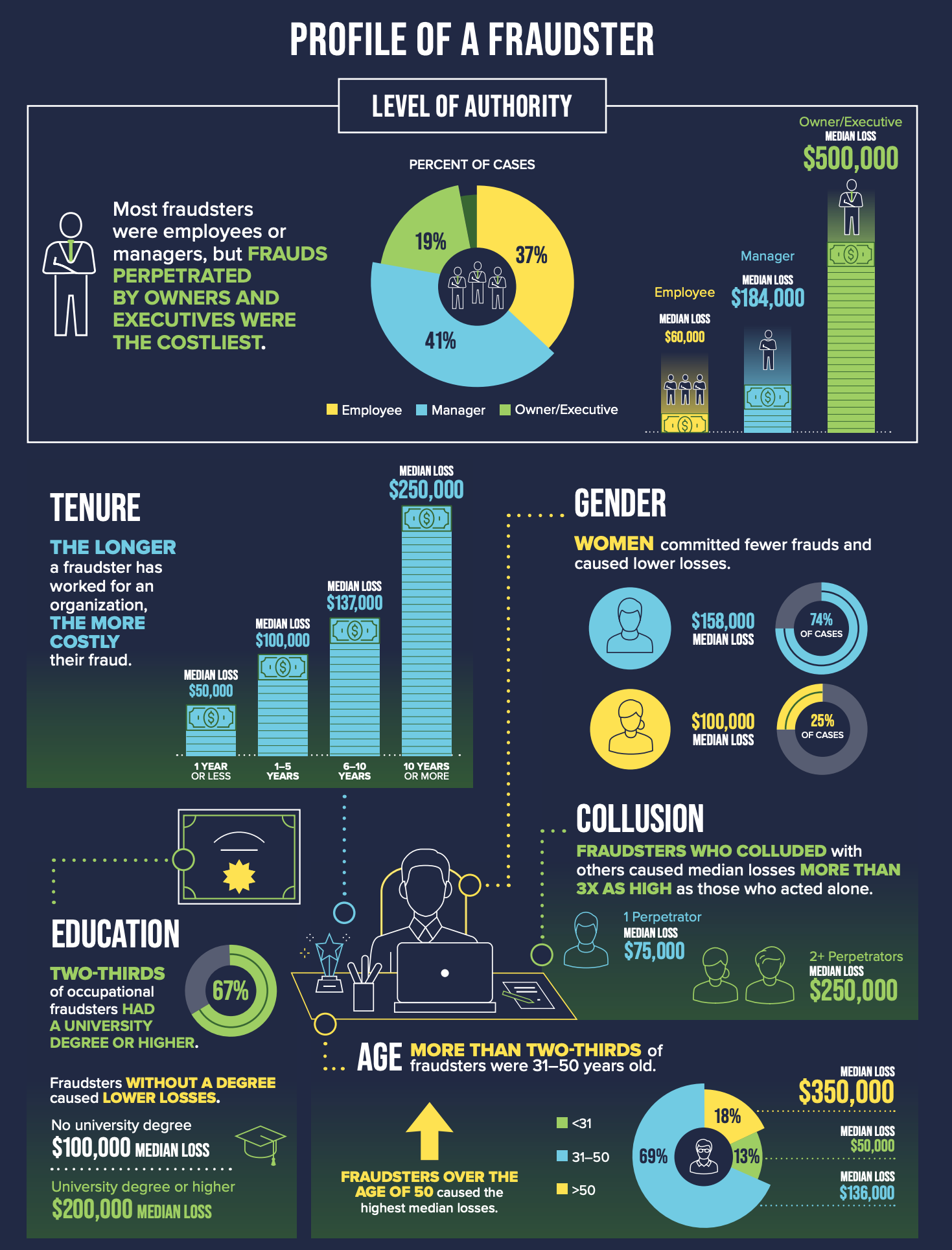How to Identify and Prevent Payroll Fraud
What is Payroll Fraud?
Payroll fraud is a deceptive practice where individuals manipulate payroll systems to steal money from a business. It is one of the most common types of occupational fraud, costing companies billions of dollars annually. Payroll fraud can occur in businesses of all sizes, but small and medium-sized enterprises are particularly vulnerable due to limited resources for oversight and fraud prevention.
There are several types of payroll fraud, each with unique methods of execution. Common examples include ghost employees, where fictitious workers are added to the payroll; timesheet fraud, where employees falsify their work hours; and misclassification of employees, where workers are incorrectly categorized to avoid paying benefits or taxes. Understanding these schemes is crucial for businesses to protect their financial health and reputation.
Common Warning Signs of Payroll Fraud
Detecting payroll fraud early can save businesses from significant financial losses. Here are some common warning signs to watch for:
- Discrepancies in Payroll Records : If payroll records don’t match employee attendance or work logs, it could indicate fraudulent activity.
- Unusual Overtime Patterns : Excessive or irregular overtime claims, especially from specific employees, may signal timesheet fraud.
- Duplicate Employee Profiles : Duplicate or suspiciously similar employee profiles in the payroll system could be a sign of ghost employees.
- Unexplained Salary Increases : Sudden and unjustified salary hikes for certain employees may indicate manipulation of payroll data.
- Missing Documentation : Lack of proper documentation for payroll changes, such as promotions or new hires, can be a red flag.
- Employee Complaints : If employees report discrepancies in their paychecks or benefits, it’s worth investigating further.
By staying vigilant and regularly reviewing payroll records, businesses can identify these warning signs before fraud escalates.
Types of Payroll Fraud and How They Occur
Ghost Employees
Ghost employees are fictitious individuals added to the payroll system, often by a dishonest employee or manager. These "employees" receive paychecks, which are then collected by the fraudster. Ghost employees are typically created using fake identities or the names of former employees who have left the company. This type of fraud is particularly common in organizations with weak internal controls, where payroll changes are not thoroughly reviewed.
Timesheet Fraud
Timesheet fraud occurs when employees falsify their work hours to receive unearned wages. This can include clocking in for shifts they didn’t work, exaggerating overtime hours, or having coworkers punch in for them when they’re absent. Timesheet fraud is often facilitated by manual timekeeping systems, which are easier to manipulate than automated systems.
Misclassification of Employees
Misclassification fraud involves categorizing employees as independent contractors instead of full-time workers. This allows businesses to avoid paying benefits, overtime, and payroll taxes. While this type of fraud is often committed by employers, it can also be exploited by employees who misrepresent their status to claim additional benefits or evade tax obligations.
Commission Fraud
Commission fraud occurs when employees inflate or falsify sales figures to receive higher commission payouts. This type of fraud is common in industries where compensation is tied to performance metrics, such as sales or marketing. Fraudsters may manipulate customer data, create fake transactions, or exaggerate their contributions to team sales.
Steps to Identify Payroll Fraud
Identifying payroll fraud requires a proactive approach and attention to detail. Here are actionable steps businesses can take:
- Conduct Regular Audits : Periodic audits of payroll records can uncover discrepancies and fraudulent activity.
- Cross-Check Payroll Records : Compare payroll data with employee attendance logs, work schedules, and project reports.
- Use Payroll Software with Fraud Detection Features : Modern payroll systems often include tools to detect anomalies, such as duplicate profiles or unusual payment patterns.
- Monitor Overtime Claims : Review overtime requests for irregularities or excessive claims.
- Verify Employee Information : Ensure all employees on the payroll are legitimate and actively working for the company.
- Encourage Whistleblowing : Create a safe environment for employees to report suspicious activity without fear of retaliation.
Preventative Measures to Avoid Payroll Fraud
Implement Strong Internal Controls
Internal controls are the backbone of fraud prevention. Segregate duties to ensure no single employee has complete control over payroll processes. Require multiple levels of approval for payroll changes, and restrict access to sensitive data to authorized personnel only.
Use Automated Payroll Systems
Automated payroll systems reduce human error and make it harder for fraudsters to manipulate data. These systems often include built-in fraud detection features, such as alerts for duplicate profiles or unusual payment patterns.
Conduct Regular Audits
Regular audits are essential for identifying and preventing payroll fraud. Audits should be conducted by an independent party to ensure objectivity. Review payroll records, employee files, and payment logs to detect discrepancies.
Employee Training and Awareness
Educating employees about payroll fraud is a powerful preventative measure. Train staff to recognize warning signs and encourage them to report suspicious activity. Establish a whistleblower policy that protects employees who come forward with information.
Legal and Financial Consequences of Payroll Fraud
Payroll fraud can have devastating consequences for businesses. Legal repercussions may include fines, lawsuits, and criminal charges against the perpetrators. Financial losses can be significant, especially for small businesses that lack the resources to recover. Additionally, payroll fraud can damage a company’s reputation, leading to lost customers and diminished trust among employees.
Case Studies: Real-World Examples of Payroll Fraud
Example 1: Ghost Employees in a Construction Company
A construction company discovered that a payroll manager had created several ghost employees, funneling their paychecks into a personal account. The fraud was uncovered during an audit, which revealed discrepancies in employee records. The company lost over $200,000 before the fraud was detected.
Example 2: Timesheet Fraud in a Retail Store
A retail store employee manipulated their timesheets to claim overtime hours they didn’t work. The fraud was exposed when a coworker reported the suspicious activity. The store implemented stricter timekeeping controls to prevent future incidents.
Tools and Resources for Payroll Fraud Prevention
- Payroll Management Systems : Software like ADP, Gusto, and QuickBooks can streamline payroll processes and detect anomalies.
- Fraud Detection Software : Tools like SAS Fraud Management and ACL Analytics can identify patterns indicative of fraud.
- Compliance Checklists : Use checklists to ensure payroll processes comply with legal and regulatory standards.
- Employee Verification Services : Services like E-Verify can confirm the legitimacy of employee information.
Final Thoughts on Combating Payroll Fraud
Payroll fraud is a serious threat to businesses, but it can be mitigated with vigilance, strong internal controls, and the use of technology. By educating employees, conducting regular audits, and leveraging advanced payroll systems, companies can protect themselves from financial losses and reputational damage.
Contact Turning Numbers Forensic Accounting to discuss your case today.




